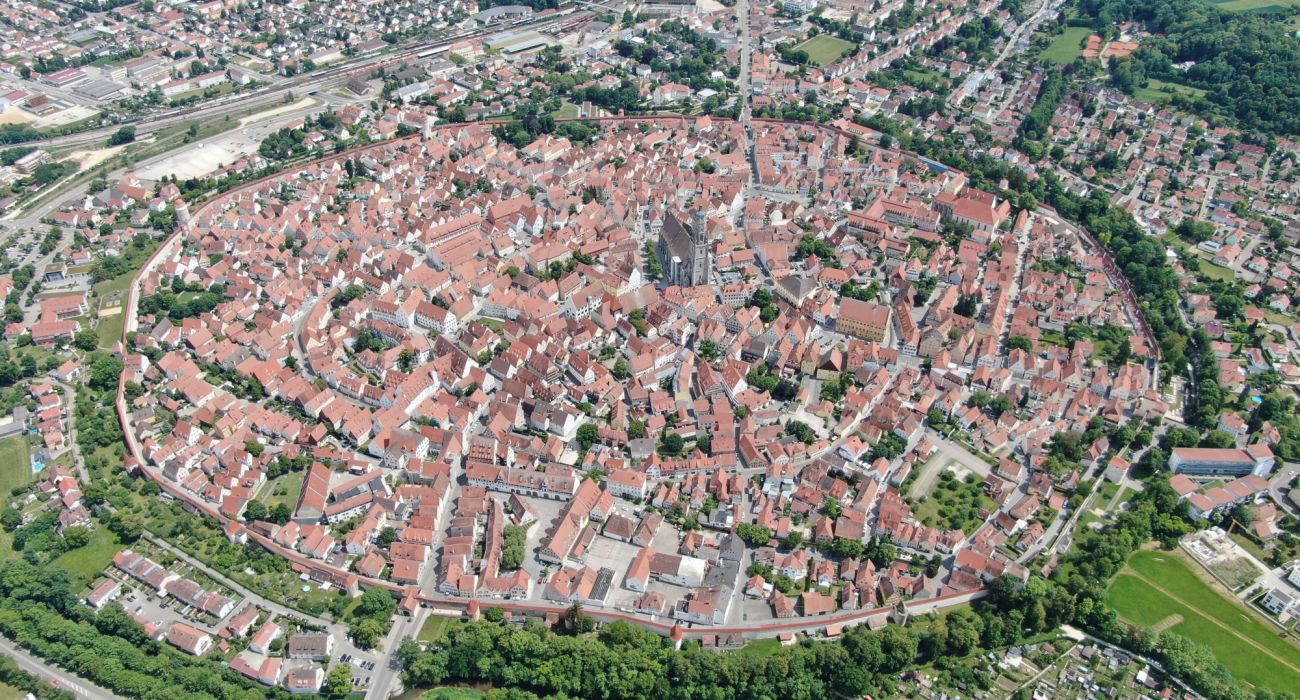Quick Links
One of the most unusual and historic towns in Germany is the southern town of Nördlingen. Nördlingen is located in the Swabian area of Bavaria in southern Germany between the major cities of Stuttgart and Munich. The town is famous for still having its old defensive wall around it and for the many micro meteorite diamonds used in its construction.
Today Nördlingen is one of the key locations along the Romantic Road. The Romantic Road is a road trip itinerary that explores much of the best of southern Germany. Over on the other side of the world, those visiting the stunning cenotes of Mexico's Yucatan Peninsula are actually exploring the Chicxulub Crater. That was formed by the asteroid that killed the dinosaurs.
The Nordlinger Ries Impact Crater & Its Millions Of Diamonds
Around 15 million years ago, during the Miocene period, a meteorite struck southern Germany around 25 kilometers in diameter. It is believed to have struck earth at a speed of around 70,000 km/h leaving the Nordlinger Ries crater seen there today.
- When: 15 Million Years Ago
- Number of Diamonds: 72,000 Tons Of Micro Diamonds
- Size of Diamonds: 0.2 mm or 0.008 in
The impact of the meteorite on the local graphite deposit created millions of tiny diamonds. It is believed that the impact left the area riddled with around 72,000 tons of micro-diamonds. These micro diamonds are less than 0.2 mm or 0.008 in across - so no one is making a necklace out of them. The meteor is thought to have been around a kilometer wide.
Nordlingen was built within the crater's depression around 6 kilometers or 3.7 miles southwest of its center. They used the stone to build the local Medieval buildings that glitter and shimmer today.
The people of Nördlingen quarried the stone from the impact crater, completely unaware they were building their city in the middle of a meteorite crater. Today, one could easily not be aware that they are standing in an ancient giant impact crater.
The crater is one of the best studied in the world, and it was even used in training for the Apollo mission.
What To See & Do In Nördlingen
While in Nördlingen, climb up to the top of the St.-Georgs-Kirche church and enjoy stunning views of the town. Marve at the church as well - its 90-meter (300-foot) steeple is made of shocked quartz. At the top of the spiral, visitors can make out the ring of the crater in the distance.
Take the time to visit the Ries Crater Museum (where visitors can also see a moon rock from the Apollo 16 mission). The museum itself is located in the medieval tanners' quarter (and the quarter is very well-preserved).
- Admission: €5.00 ($5.00) Per Adult
- Opening Hours: 10.00 am to noon & 1.30 pm to 4.30 pm (After 8th November)
- Closed: Mondays
Museums Of Nördlingen:
- Ries Crater Museum
- Bavarian Railway Museum
- Nördlingen City Museum (Stadtmuseum)
- Augenblick Museum
- City Wall Museum (Stadtmauermuseum)
Nördlingen is home to other museums as well - Bavarian Railway Museum, the Nördlingen city museum (Stadtmuseum), the city wall museum (Stadtmauermuseum), and the Augenblick museum.
Nördlingen: One Of The Few Medieval Towns To Have Its City Walls
Nördlingen was built near an old Roman settlement on the road, the Via Claudia Augusta, from Augsburg (a very important ancient city). The first recorded history of Nördlingen dates from 898, and for much of its Medieval history, it was a Free City before eventually becoming part of Bavaria.
Nördlingen was the site of important battles of the Thirty Years' War and is today one of only three German towns to still have its completely intact city walls (the other two are Rothenburg ob der Tauber and Dinkelsbühl).
- Population: 20,600
- Location: Swabia, Bavaria, In Southern Germany
For more ideas of what to see and do in Nördlingen, visit the Nördlingen Tourist Office. It is located in the central square behind the Town Hall. The tourist office is open from Monday to Friday all through the year and also on weekends and public holidays during the summer months.
If visiting during the summer months, inquire with the Nördlingen Tourist Office about their daily guided tours (although they are only offered in German).
Forget about palaces, grand estates, and castles being made out of diamonds. It turns out a humble Medieval town is.

